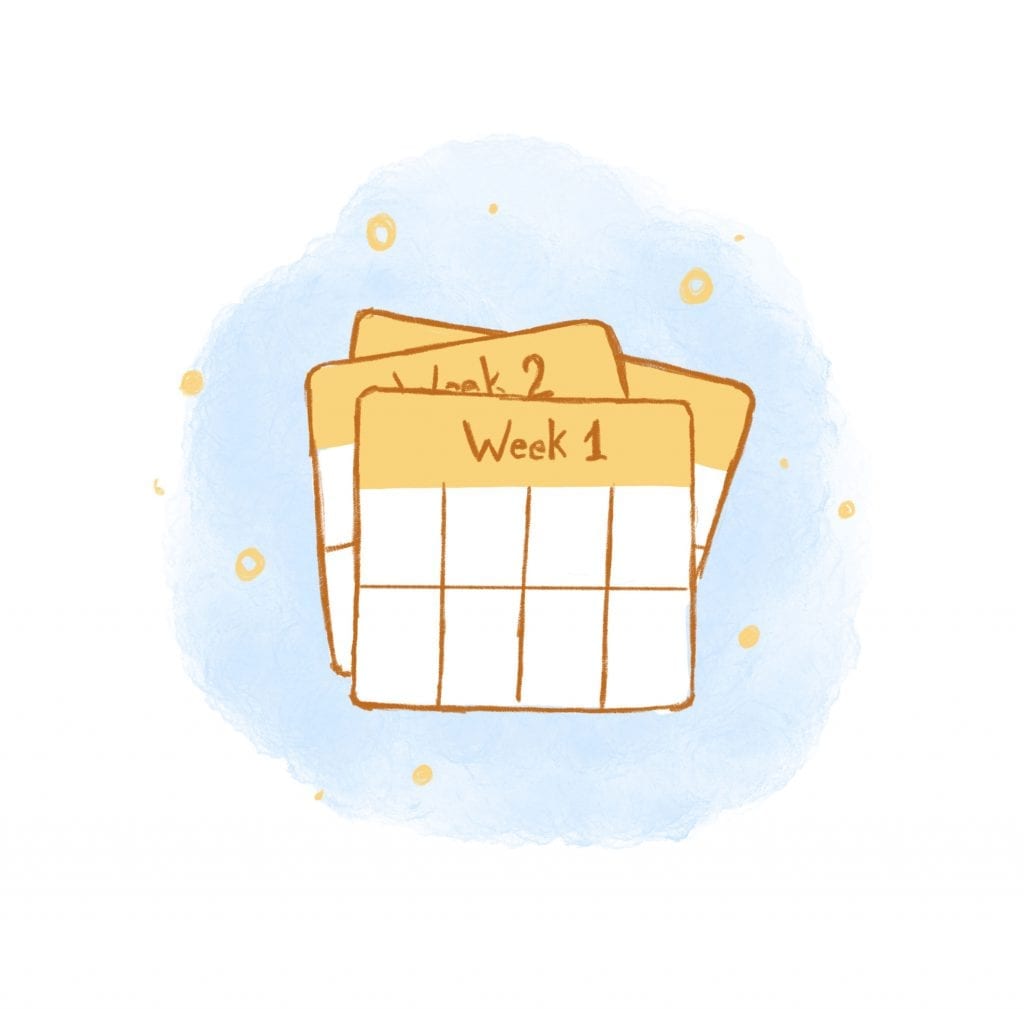

While organizing your calendar is something we all know that we should do, it’s usually a task that end-up brushing off. As a result, we end-up having days filled with overlapping meetings and to-do-lists that don’t get completed. In other words, keeping your calendar organized allows for having more smooth and productive days. Use these 10 calendar best practices to stay organized.
10 Calendar Best Practices
1. Think before you act.
What does the start of your day look typically look like? Do aimlessly wander around until you’re supposed to be at work? Once it’s time to get working, do you just grab your first to-do on the top of the pile — regardless of it’s importance?
That’s not exactly the best way to get your day started. Instead, take a couple of minutes every night to plan your daily schedule for the next day. This way you can review your meetings and appointments, determine which tasks should be top priorities, and actually put them into your calendar.
It doesn’t sound like much, but it ensures that your most important chores and events are accounted for so that they won’t fall through the cracks, More importantly, it makes sure that your calendar remains organized and manageable.
2. Start your day bright and early.
If you want to stay ahead of your calendar, then start your day bright and early. This way you can start get a jumpstart on your day since you’re accomplishing some of your most important tasks before anyone else is up.
In fact, that’s why I wake-up at 5:15 a.m. every morning. I’ve found that that’s the productive time of the day. Additionally, it keeps me organized since I have the time to eat a healthy breakfast, exercises, catch-up on emails, and review my calendar for the day. If I spot a conflict or notice that a client has cancelled a meeting I can shuffle things around accordingly.
3. Break your day into blocks.
In today’s fast-paced world it’s not uncommon for us to multi-task. We’ve even developed this mentally where we believe that if we’re not multi-tasking, then we’re not productive.
The thing is, multi-tasking doesn’t work. It actually lowers your quality of work and efficiency.
The third calendar best practice is to stop multitasking and start devoting a block of time to a single activity. This way you’re giving that task your full attention and are able to complete it before moving-on to something else.
For example, you could block-out nine a.m. to noon for work. During this block of time you do nothing else except work. If you have emails or calls to return, then block out a time for that task. I’ve also found blocking out time for lunch prevents me from scheduling anything during this time I need to recharge.
To get started with breaking your day into blocks, figure out how much time you need to complete a to-do. If it takes an hour for your to exercise, then block it off those 60-minutes your calendar. Once you do that, you can schedule any other meetings or activities at different times of the day.
4. Address conflicts immediately.
Sometimes conflicts arise — no matter how organized you are. That’s just life. The difference between remaining organized and living in chaos is by not addressing those conflicts immediately.
So if you notice that you overlapped meetings when reviewing your calendar in the morning, ask the members of the second party if you can push the meeting back 30 –minutes.
5. Eliminate back-to-back appointments.
Speaking of back-to-back appointments, avoid them at all cost from the get-go. The reason? It always ensures that you’re going to be scrambling all day. There’s always the good chance that you’ll be running late.
Thankfully, scheduling tools like Calendar can eliminate this once-frustrating problem. That’s because you let Calendar know your availability before sharing it with others. This way you can set buffer times between meetings so that back-to-back meetings no longer occur.
6. Clear the clutter.
Clearing the clutter from your calendar is one of the best ways to keep you organized. That’s because it encourages you to complete your highest priorities first. Additionally, it prevents you from filling your calendar with minute activities or unnecessary meetings.
7. Only accept meetings or appointments if they have a purpose.
If you want to keep your calendar free of time-wasting obligations, then start declining “bad meetings.” You know what these are. They’re meeting requests that don’t have any details, agenda, and purpose.
Only accept meeting requests where the other part clearly states what the meeting is about. This way you aren’t wasting your time.
8. Say “no,” even if you’re already said “yes.”
Just because something is on your calendar doesn’t mean that it’s written in stone.
Let’s say that you have a meeting on your calendar, but you need to call an emergency team meeting during that time. You can absolutely cancel that meeting and reschedule it for a later date. However, as a common curiosity, make sure that you give adequate notice.
9. Quit before quitting time.
When the clock strikes five p.m., it’s natural for you to want to head home immediately. After all it’s been a long day and you’re ready to unwind.
But, if you take around 15 minutes to tidy up your workplace, put everything back where it belongs, and review your schedule or to-dos for the next day, you’ll make your mornings a whole lot less chaotic.
Instead of wasting time looking for items or planning your schedule, you can ask yourself “Now what do I need to get done today?” as soon as you arrive.
10. Don’t keep your calendar to yourself.
Finally, don’t be shy about sharing your calendar with others. Whether if it’s your colleagues, clients, or family members, sharing your calendar makes sure that everyone is on the same page. This way you’re not over-committing, double-booking, or forgetting about important events or meetings. This calendar best practice works best when paired with a meeting scheduler, that way your meeting attendees can schedule meetings with you directly, without the back and forth of emails.











John Rampton
John’s goal in life is to make people’s lives much more productive. Upping productivity allows us to spend more time doing the things we enjoy most. John was recently recognized by Entrepreneur Magazine as being one of the top marketers in the World. John is co-founder and CEO of Calendar.